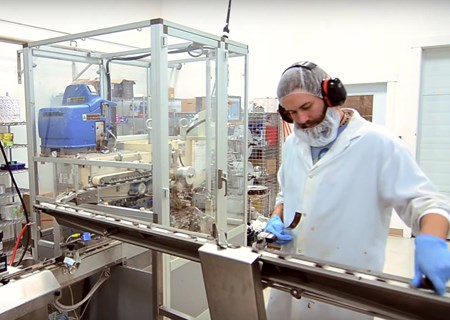|
Y |
ou may want to put down your food and reconsider what you’re eating if you happen to be reading this and having a meal.
According to a Richmond-based software development firm that has produced a food safety monitoring and reporting system, most small and large food manufacturers do not have an adequate food safety plan in place that, among a variety of tasks, tracks ingredients and critical points in the production process, such as cooking temperatures.
Steven Burton, a software architect who developed Icicle Technologies Inc., said the cloud-based software lets manufacturers of varying sizes manage production information to help identify potential problems that could lead to an outbreak of food-borne illnesses.
But in general, few businesses are interested in setting up a food safety plan.
Why?
“There’s a very broad sense of invincibility in the industry, where people simply don’t believe the recalls are going to happen to them,” Burton said, adding B.C. has roughly 5,500 food producers, ranging from large manufacturers with hundreds of employees, to small, mom and pop operations.
“We can help them by providing a software tool that lets them quickly and easily develop a plan and manage all of that information.”
And that starts with a system such as Icicle, which models a firm’s production process.
“You need to define the products that are produced, the ingredients, materials and packaging. And for each of those elements, you need to identify the biological and chemical hazards, to determine how they are going to be controlled,” Burton said.
Depending on the level and complexity of a food production plant, the information is uploaded to the system by employees entering data manually or automatically via sensors on a production line.
Critical control points in a process are also identified.
“Cooking tends to be a critical control point in a lot of businesses. So is metal detection,” Burton said, adding it can be surprising what can sometimes end up in a finished product.
The information is presented on a computer screen, and even a smartphone, in the form of dashboard-like indicators showing how many hazards have been identified and how many have been controlled.
“The system also allows you to capture many steps in a supply chain. That means we can have one Icicle client that produces products which are then used by another Icicle client. By having that kind of connectivity, we can provide greater transparency.”
And if a production process is altered to add other ingredients or a change in cooking times, the monitoring system is adapted and updated.
So far, Icicle is used by about 600 clients to manage the production of Kosher-certified items. It also helps keep a food safety eye on firms in 11 countries. Locally, operations such as Chewters Chocolates and Lesley Stowe Fine Foods Ltd. have signed on.
But it’s not just food manufacturers who are potential clients. Burton said food retailers are starting to take notice of the benefits a monitoring system such as Icicle can provide to mitigate their risk of recalls.
“They do happen. And they are expensive,” Burton said. “Look at Safeway this week and the recall on cucumbers.
“People were sickened in seven states in the U.S.. It was a huge problem.”
According to Canadian Press reports, the recall in Canada was triggered by a suspected salmonella outbreak south of the border.
More seriously, back in 2008 and early 2009, a widespread outbreak of food poisoning claimed nine lives and hospitalized hundreds in the U.S. when a salmonella outbreak was linked to peanuts and peanut-based products.
“I thought every company had a food safety program in place. Then I thought that at least the ‘good’ companies had them in place. But that wasn’t necessarily true,” Burton said. “And even when there was one, it was questionable what it looks like. That’s why you see good companies with recalls, too.”



